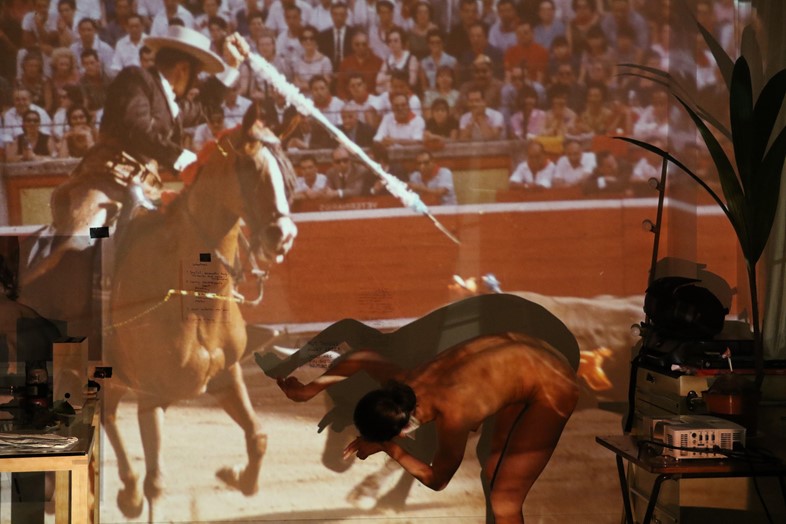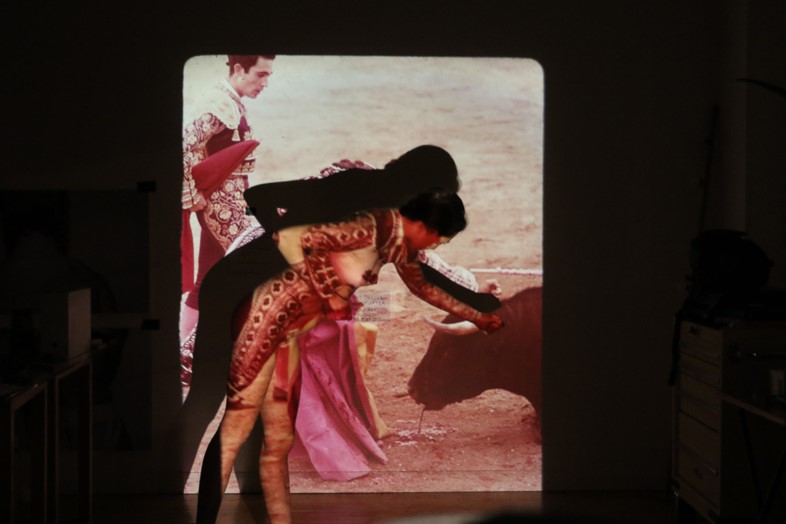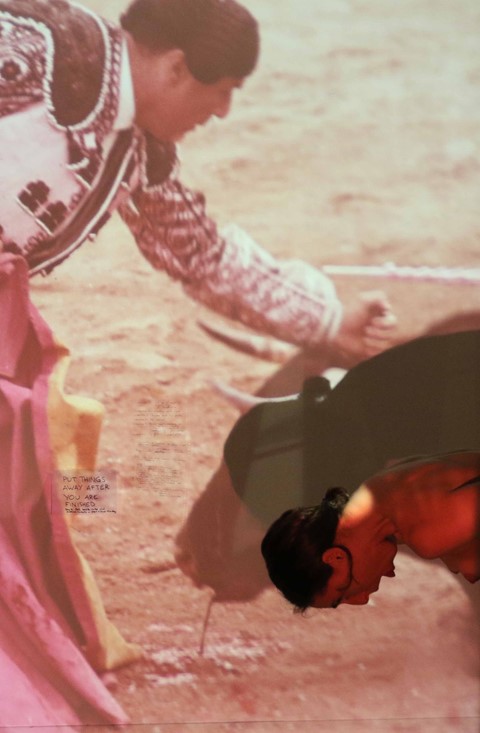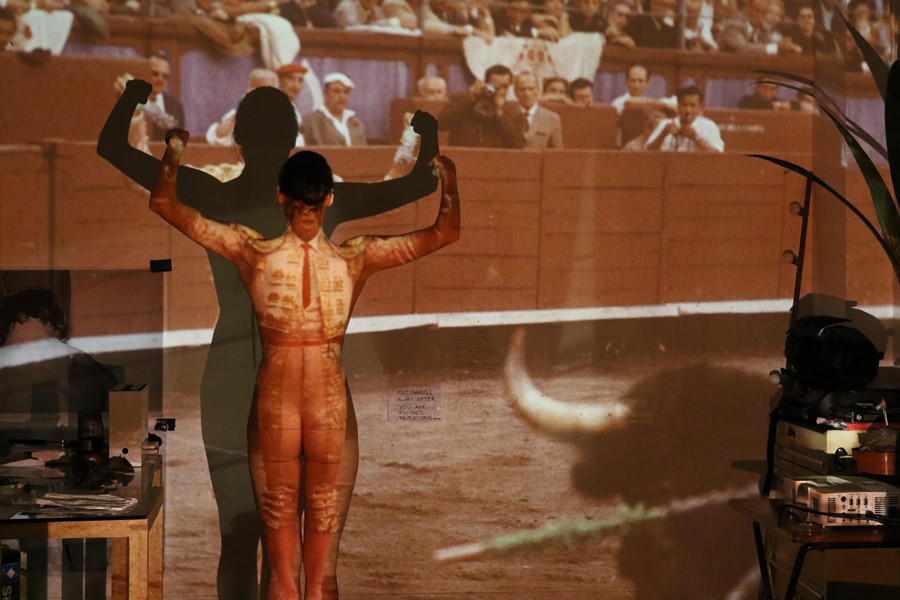Ahead of a performance of The Fissure at London’s Cob Gallery, Cristina Planas on how she uses boxing to get in her headspace
Across all art, and indeed all human emotion, violence and beauty have performed an ongoing, carnal dance that makes them inextricably linked. This visceral communion is brought to life superbly by artist Cristina Planas and her piece The Fissure, which uses her own body alongside vintage slides of bullfighting to investigate the slippery relationship between dominator and dominated, slayer and slain.
In the piece she becomes a series of “embodiments”, reappropriating both the bull and the “tropes and gestures of masculinity” through her own female body. The work ties into her roots – Planas grew up in Montreal and studied art at The Slade in London, but her parents are Spanish – and a chance meeting with a girl who was selling a slide projector, and happened to have a number of 1970s bullfighting slides. “There’s always an element of narrative and storytelling in my work, sometimes it’s hard to tease out how much of the story needs to be told and how much can be experienced,” she says. “A lot of it is relational, about the structures of desire, conflict and emotional duality.” She adds: “I perform mostly naked as it’s about the vulnerability of the body. But I don’t feel naked when the image is on me.”
Here, we talk to her about physicality and art, being in the body not the mind, and why boxing has been such a powerful force in her art.

On how boxing informs her practice...
“Getting into the headspace for performing means going inwards; mostly just coming back into my body. In the past year I started boxing, and the training has become a structural component to my work. It was pretty mad, I started boxing as I had a lot of emotional things to work through, so it was a way of coming into my body and gaining agency with the physical. Within six months I started competing and won a gold medal! It’s been so incredible; I threw myself into this process without any idea, and it was like a total surrender. I’ve been exercising and exploring the body as a vector of knowledge and a grounding element, then I also started [flamenco] dancing when I discovered I had this physical ability.”
On discipline…
“Submitting to a form of discipline both in boxing and in dance has changed my life really. I’m learning how to go through things with discipline, and that discipline doesn’t have to mean pain or punishment, which is how I experienced it in the past. It’s working in and through the body, and coming back into certain emotional spaces, which is where this performance is stemming from. It was a way for me to work through a series of emotional conflicts and it’s been a transformative and human process: there’s paradox there as [boxing is] totally brutal, but it has been really healing and reparative.”

On the links between physical activity and performance art...
“It’s about beginning to access truth, but obviously in order to access truth in any art through the body or anything else takes years to put in the practice or training. Your body becomes a sensor: it was very much about leaving and going into the feeling body rather than thinking in the mind all the time – the notion of getting out of your own way. With dance, this is the first time in my life I can allow rhythm to flow through me and there’s nothing like it: I feel like I’ve understood what pleasure is for the first time. Working with the body in relation to performance is a mode of thinking through something with the body. I’ve always had to engage with material quite physically to absorb it – even with reading I have to use my hand and write it out.”

On the title The Fissure...
“It’s taken from a text which has accompanied me along the evolution of the work from Michel Leiris called The Bullfight as Mirror. This text is so beautiful. In bullfighting there’s a moment where the bullfighter draws the bull in very close – they’re dancing around each other before he kills it, and it’s that moment of turning around someone else; these two forms that are essentially trying to join and commune. The “fissure” is the idea of realising there’s no moment of truly communing with another human being – it’s totally impassioned and carnal, there’s a part that really gets me on an emotional level. Flaws are also the cracks through which beauty can seep in; something that’s beautiful relies on the moment of imperfection.”
Cristina Planas will perform The Fissure at London’s Cob Gallery on October 30, 2018. Planas’ work is on show at Cob Gallery in New Work Part III: Subject until November 3, 2018.
